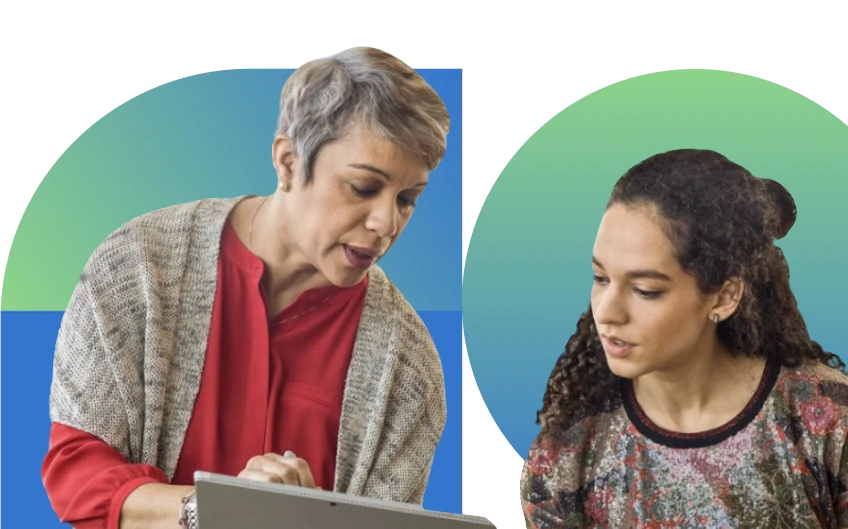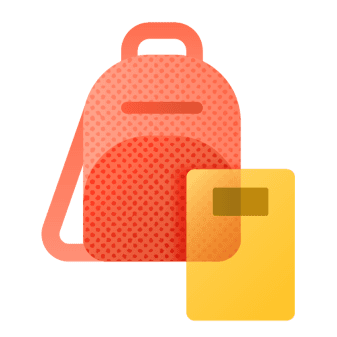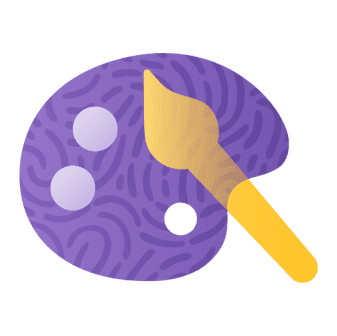From small classroom changes to larger system-wide strategies, AI is becoming part of the future of education. The conversation is no longer “if” but “how” as institutions consider what that means for students, educators, and institutions. To better understand this shift, we conducted numerous studies and surveys and collaborated with academic institutions and organizations. The 2025 AI in Education Report explores current AI use, emerging opportunities and leading examples, and what’s next for its role in education.
Here are four key takeaways from the 2025 AI in Education Report:
- AI adoption is accelerating across education, but training hasn’t kept pace.
- AI can be a creative and collaborative partner, by complementing—not replacing—traditional learning methods.
- AI fluency is a workforce imperative, with growing pressure on institutions to prepare students accordingly.
- AI is helping reimagine learning experiences, but challenges around responsible usage and readiness must be addressed head-on.
We’ve also surveyed academic and IT leaders, educators, and students from around the world—explore the detailed AI in Education Report survey data for more insights.
1. AI adoption is accelerating across education
The report findings show that AI usage in education has surged, with 86% of education organizations now using generative AI—the highest rate of any industry.1 In the United States:
- Student use of AI for school jumped 26 percentage points from last year.
- Educator use rose 21 percentage points.
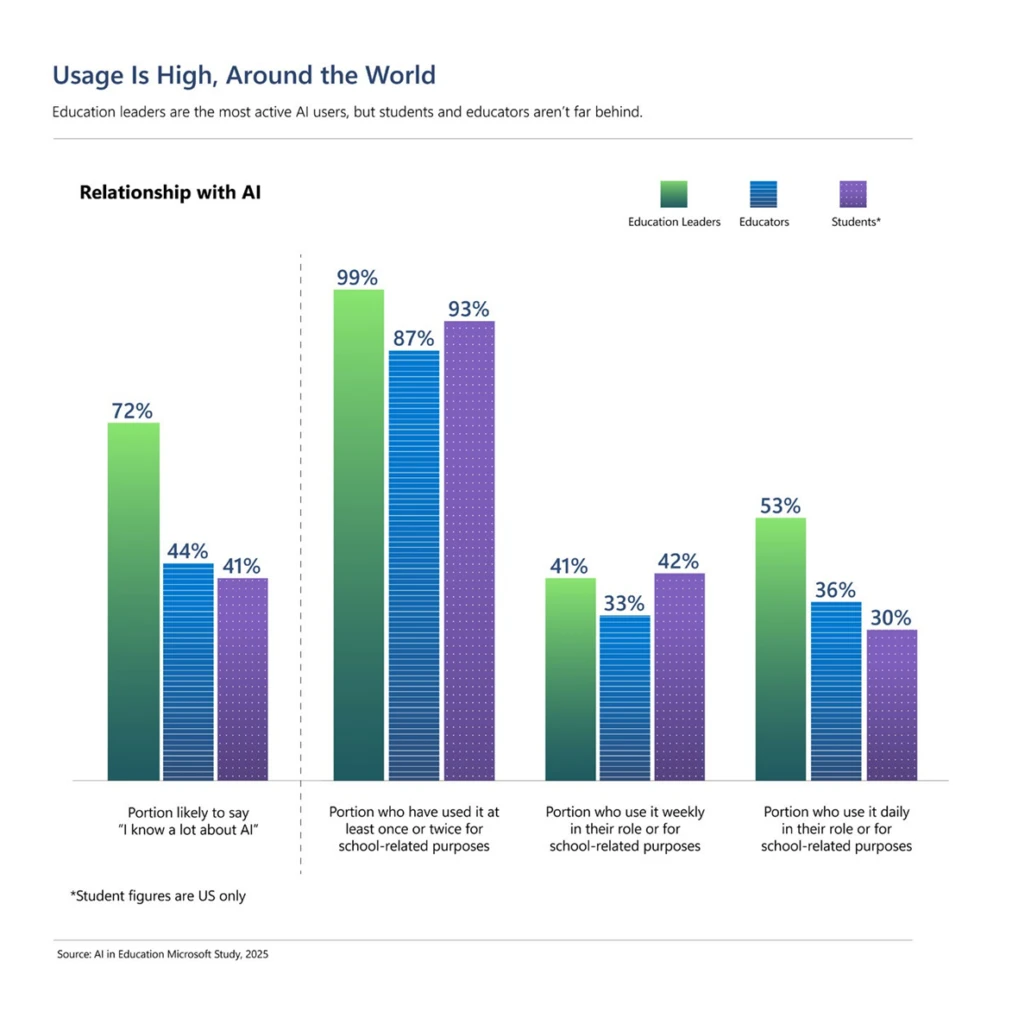
From personalized learning in K-12 classrooms to AI-powered administrative tools in universities, institutions are rapidly integrating AI to improve efficiency, engagement, and outcomes.
But it seems that AI training hasn’t kept pace:
- Less than half of US students and global educators say they know a lot about AI.
- Internationally, 76% of leaders say that half or more of AI users at their institution have received AI training.
- Yet 45% of educators globally and 52% of US students say they haven’t received any training.
This mismatch signals a perception gap between what leaders think they’ve delivered, and what students and educators feel they’ve received.
Recommendations
- Share the AI for educators learning path to help educators build confidence and practical skills for using AI in their daily practice.
- Offer ongoing, differentiated professional learning using the AI Skills Navigator.
- Use the Microsoft Education AI Toolkit to guide strategic planning across your institution.
2. AI is a creative and collaborative partner
AI is helping students, educators, and education leaders think more creatively and work more collaboratively. The 2025 AI in Education Report shows that:
- Students are using AI to brainstorm assignments (37%), summarize information (33%), and receive feedback (32%).
- Educators are using it to brainstorm, create, and update lessons (31%), simplify complex topics (24%), and differentiate instruction (23%), freeing up time to focus on student engagement.
- Leaders are using it to streamline operations (35%), provide accessibility tools (33%), and identify opportunities for student growth (33%).
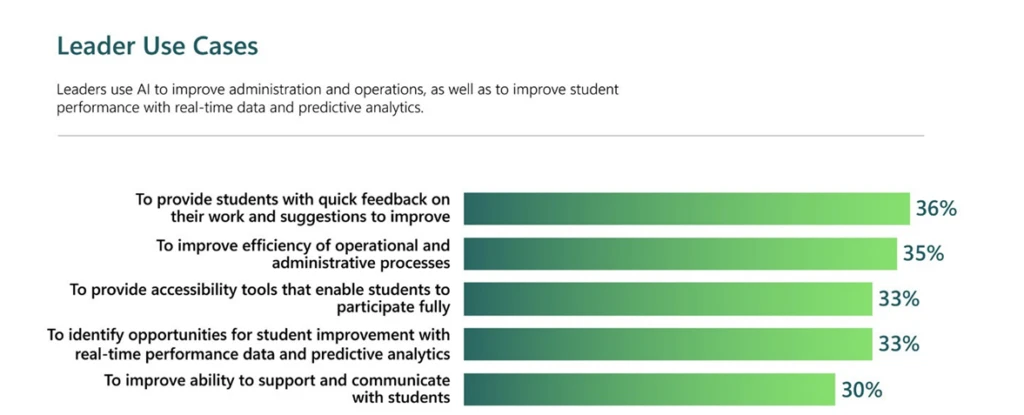
These uses help leaders and educators free up time for engagement, empower students to learn in ways that work best for them, and encourage creative exploration for all.
While AI use is growing, the report findings show that it’s more effective when used to complement—not replace—traditional learning methods. A study from Microsoft Research and Cambridge University Press & Assessment found that students who combined AI tools with note-taking and other methods learned more than those who relied on AI alone.
Recommendations
- Use AI-powered Microsoft Learning Accelerators to complement instruction—giving students real-time feedback and supporting you in guiding their learning.
- Encourage experimentation with Microsoft 365 Copilot and Copilot Chat to explore new ways of enhancing, not replacing, traditional learning methods.
We use Copilot Chat as a brainstorming partner to ideate, but not to actually do our work for us. It helps us collaborate and expand our creativity to think of more ambitious ideas.
Pragya Modgil, student, Johns Creek High School, Fulton County Schools
3. AI fluency is a workforce imperative
AI fluency is becoming a top priority for new workers—alongside fundamentally human skills like conflict mitigation and adaptability. Together, these skills are going to be essential when students enter the new world of work. The report notes that:
- Upwards of 47% of leaders consider upskilling employees in AI is the top workforce strategy for the next 12 to 18 months.
- 66% of leaders say they wouldn’t hire someone without AI literacy skills.

Educators and education leaders acknowledge the need for more AI skills training, with 54% of global educators and 76% of global leaders viewing AI literacy as an essential component of basic education for every student. Today’s students will need to be able to:
- Know how to use AI as an assistant, not as a tool.
- Learn how and when to delegate to AI and when to involve people.
- Think like managers—since it’s likely they’ll be managing AI.
Recommendations
- Explore institutional approaches like the “Teaching with AI” course at Auburn University or the Waterloo Experience Accelerate Program at the University of Waterloo.
- Use the immersive activities in Minecraft Education AI Foundations to teach students both technical and human-centered AI skills.
- Transform teaching and support job readiness with Copilot Chat, available for students 13 and older.
4. AI is helping to reimagine learning experiences
Whether it’s supporting neurodivergent learners, facilitating multilingual communication, or acting as a brainstorming partner, AI is empowering students and educators to explore new ways of thinking and learning together. In a UK-based study, university students and educators said AI helped them overcome creative blocks, explore new topics, and clarify complex content—describing it as a collaborative partner available around the clock.
Yet while AI is expanding new possibilities in education, realizing its full potential requires addressing the concerns it raises. The 2025 AI in Education Report sheds light on the evolving landscape:
- Students are most concerned about being accused of plagiarism or cheating (33%) and becoming too dependent on AI (30%).
- Educators’ top concern is plagiarism (31%), followed by overreliance (21%), misinformation (20%), security (20%), and insufficient training (20%).
- Leaders are most concerned about ethical concerns (21%), lack of IT readiness (20%), and equitable access (18%).

Recommendations from the report to address these concerns include fostering open communication, leaning into always-on training opportunities, and creating space for your community to share and reflect. Together, these actions can help build a more informed, inclusive, and confident culture.
Recommendations
- Read the IDC White Paper, A Blueprint for AI-Ready Campuses, sponsored by Microsoft, for organizational, process, and technological recommendations to shape and advance AI strategy.2
- Explore real-world stories of AI in education from World Traveler School, Brisbane Catholic Education, and Kelley School of Business at Indiana University.
- Get started with AI solutions from Microsoft Education to expand possibilities at your institution.
Creating opportunity through AI in education
While AI familiarity and usage are high across all groups, gaps remain. The insights from this report point to four key challenges facing AI in education:
- Adoption without alignment – Widespread AI use is outpacing training and shared understanding among educators and students.
- Creative potential, cautious optimism – The possibilities with AI are inspiring but must be grounded in proven teaching and learning strategies to be effective.
- Workforce preparation needs – Institutions recognize the importance of AI literacy but need practical support to embed it meaningfully into curriculum and instruction.
- Reimagining learning responsibly – AI offers exciting potential, and realizing that potential will require engaging students and educators to build solutions together through open communication.
To move forward, educators, leaders, and students should work together, adapt in real time, and commit to responsible use of AI. Educators and leaders aren’t asking for bans—they’re calling for high-quality, job-embedded professional learning.
Teachers are saying, ‘I need training, it needs to be high quality, relevant, and job-embedded…’ In reality, people require guidance and that means teachers and administrators going through professional development.
Pat Yongpradit, Chief Academic Officer of Code.org and Lead of TeachAI
AI can be a powerful thought partner and force multiplier—amplifying ideas, streamlining tasks, and unlocking new possibilities for teaching and learning. As you navigate the opportunities and complexities of AI, Microsoft Education is here to support you with tools, training, and insights. Explore the full 2025 AI in Education Report to dive deeper into the data and use the resources in this blog to support your own AI journey.
1 IDC InfoBrief: sponsored by Microsoft, 2024 Business Opportunity of AI, IDC# US52699124, November 2024. IDC’s 2024 AI opportunity study: Top five AI trends to watch – The Official Microsoft Blog
2 IDC White Paper, sponsored by Microsoft, A Blueprint for AI-Ready Campuses: Strategies from the Frontlines of Higher Education, IDC# US53344625, May 2025. AI-ready campuses: Strategies from higher education frontlines | Microsoft Education Blog





